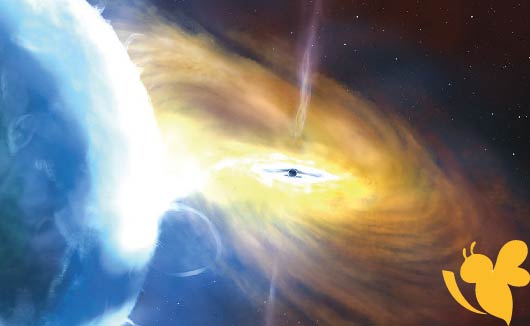The concept of the universe's end has long captivated scientists and philosophers alike. Recent research suggests that this eventuality may be approaching sooner than previously anticipated. A study utilizing data from the GAMA survey, which analyzed over 200,000 galaxies, indicates that the universe's energy output has diminished by at least 50% over the last two billion years . This decline supports the "Big Freeze" hypothesis, positing that as the universe continues its expansion indefinitely, it will ultimately reach a state of "heat death," where matter dissipates into weak radiation.
In 1975, physicist Stephen Hawking postulated that, contrary to the theory of relativity, particles and radiation could escape from a black hole.
At the edge of a black hole, two temporary particles can form, and before they merge, one particle is sucked into the black hole and the other particle escapes.
One of the consequences of Hawking radiation is that a black hole very slowly decays into particles and radiation.
This contradicts Albert Einstein’s theory of relativity, which says that black holes can only grow.
Professor Falcke and co-authors calculated that the process of Hawking radiation theoretically also applies to other objects with a gravitational field.
Because the researchers were at it anyway, they also calculated how long it takes for the moon and a human to evaporate via Hawking-like radiation. That's 1090 years. Of course, the researchers subtly note, there are other processes that may cause humans and the moon to disappear faster than calculated.
Co-author Walter van Suijlekom, professor of mathematics at Radboud University, adds that the research is an exciting collaboration of different disciplines and that combining astrophysics, quantum physics and mathematics leads to new insights.
While these findings do not forecast an immediate end to cosmic existence, they emphasize that the universe is entering a phase characterized by gradual fading and entropy . The implications of such research extend beyond mere academic curiosity; understanding our universe's trajectory informs both theoretical physics and existential contemplation. As humanity grapples with its own fate on Earth amidst various catastrophic threats—such as asteroid impacts or solar expansion—the notion of cosmic obsolescence underscores a profound connection between our existence and the vast cosmos .
Read more
White South Africans arrive in US after refugee status granted US to reduce 'de minimis' tariff on China shipments to 54%, down from 120%.Zainab Y.
Also on site :
- Rosie O’Donnell and Charlize Theron among celebrity critics of ‘gross’ Bezos wedding
- Starbucks unveils new drink — but it’s only available for a week
- Netflix is about to remove your favourite original series after nine years

